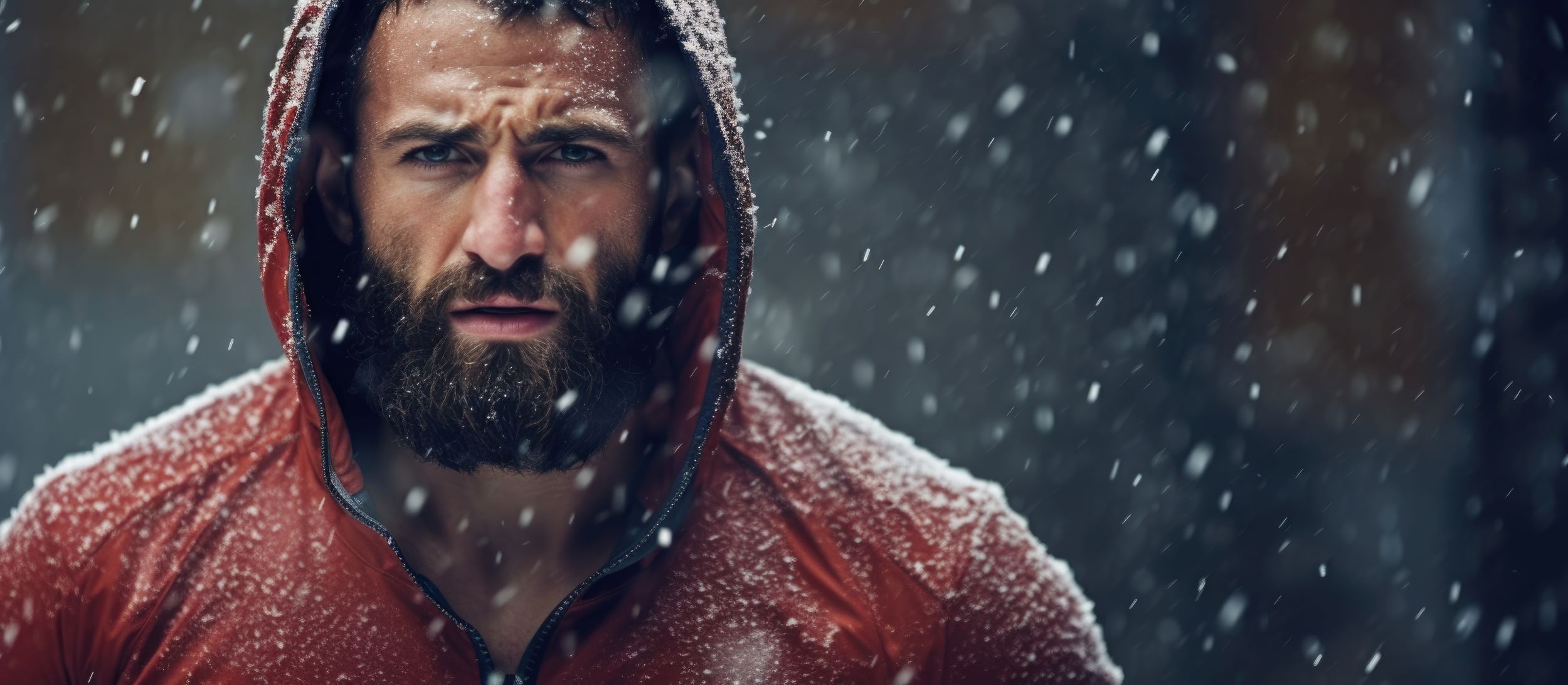Embarking on a half marathon training plan can feel daunting, especially for novices. Understanding the structure and purpose of this training is essential for a successful journey. A half marathon, measuring 13.1 miles, requires a balance of endurance, speed, and proper recovery to navigate effectively.
For novice runners, the focus should be on gradually building your mileage and incorporating various training elements. Here are some key components to consider:
- Long Runs: These are crucial for developing endurance. Aim to increase your long run distance each week, but do so gradually to avoid injury.
- Speed Work: Incorporating intervals or tempo runs helps improve your pace and stamina. These workouts should be done once a week.
- Cross-Training: Engage in activities like cycling or swimming to enhance overall fitness and prevent burnout.
- Rest Days: Recovery is just as important as training; don’t underestimate the power of rest to allow your body to heal and adapt.
Additionally, nutrition plays a vital role. A balanced diet rich in carbohydrates, proteins, and healthy fats will fuel your runs and recovery. Hydration is equally important, particularly on long run days.
Ready to kickstart your half marathon journey? Visit our website to learn more and get started today! Click here.
Key Components of a Successful Training Plan
Creating a successful training plan for a half marathon involves several key components that work together to prepare you physically and mentally for race day. Understanding these elements will not only enhance your performance but also make the training process more enjoyable.
Here are the essential components to include in your training plan:
- Structured Weekly Schedule: A well-organized weekly plan helps you balance running with other activities. Typically, this includes a mix of long runs, easy runs, and speed workouts spread throughout the week.
- Progressive Mileage: Gradually increasing your weekly mileage is crucial for building endurance. A common approach is to increase your total mileage by no more than 10% each week to prevent injury.
- Varied Workouts: Incorporating different types of runs—easy runs, tempo runs, and interval training—can improve your overall fitness. Each workout serves a specific purpose, from building speed to enhancing aerobic capacity.
- Recovery and Tapering: Allowing time for recovery is essential for muscle repair and growth. As race day approaches, tapering your mileage will help you arrive at the start line feeling fresh and ready to perform.
- Nutrition and Hydration Strategy: A solid nutrition plan tailored to your training schedule will support your performance. Focus on consuming adequate carbohydrates for energy, alongside proteins for muscle repair.
By integrating these components, you can create a comprehensive and effective half marathon training plan that sets you up for success while keeping the joy of running alive.
Weekly Training Schedule for Novice Runners

For novice runners embarking on their half marathon journey, a well-structured weekly training schedule is essential. This schedule not only helps build physical endurance but also establishes a routine that can enhance motivation and enjoyment. Below is a sample weekly training schedule tailored for beginners:
- Monday: Easy Run – 3 to 4 miles at a conversational pace. This run aids in recovery from the weekend’s long run while maintaining your weekly mileage.
- Tuesday: Cross-Training – Engage in low-impact activities such as cycling, swimming, or yoga for 30 to 45 minutes. This will help strengthen different muscle groups and improve overall fitness.
- Wednesday: Speed Work – Incorporate interval training, such as 4 x 400 meters at a faster pace with equal time for recovery. This workout builds speed and stamina.
- Thursday: Rest Day – Allow your body to recover. Rest is crucial for muscle repair and injury prevention.
- Friday: Tempo Run – 3 to 5 miles at a comfortably hard pace. This run should feel challenging but sustainable, helping you adapt to higher intensity.
- Saturday: Long Run – Gradually increase your long run from 5 to 10 miles over several weeks. These runs are pivotal for building endurance and confidence for race day.
- Sunday: Rest or Light Activity – Engage in gentle activities like walking or stretching to promote recovery.
As you progress, feel free to adjust the distances and intensities based on your comfort level and fitness improvements. Consistency is key, and this schedule is a guide to help you stay on track while enjoying the journey to your half marathon!
Essential Tips for Novice Half Marathon Training

Training for a half marathon can be both exciting and daunting, especially for novice runners. To help you navigate this journey successfully, here are some essential tips that will set you up for success:
- Listen to Your Body: It’s important to pay attention to any signs of fatigue or discomfort. If you feel pain or excessive fatigue, consider taking a rest day or reducing your mileage temporarily.
- Stay Hydrated: Proper hydration is crucial for optimal performance. Make sure to drink water before, during, and after your runs. Consider carrying water or using hydration packs on longer runs.
- Fuel Properly: Nutrition plays a significant role in your training. Incorporate a balanced diet rich in carbohydrates, proteins, and healthy fats. Experiment with energy gels or snacks during long runs to find what works for you.
- Invest in Proper Gear: Quality running shoes that fit well are essential for preventing injuries. Visit a specialty running store to get fitted and consider replacing shoes every 300-500 miles.
- Incorporate Strength Training: Adding strength training to your routine can help improve your running efficiency and reduce the risk of injury. Focus on core exercises and leg strength to support your running.
- Join a Running Group: Connecting with a community of runners can provide motivation and support. Joining a local running group or online community can enhance your training experience.
- Set Realistic Goals: Establish achievable goals that focus on your progress rather than just the race finish. Celebrate small milestones to keep the motivation high throughout your training.
By following these tips, novice runners can enhance their training experience and build confidence as they prepare for their half marathon. Remember, every runner’s journey is unique, so be patient with yourself and enjoy the process!
Nutrition and Hydration Strategies for Runners

Proper nutrition and hydration are vital components of any half marathon training plan, especially for novice runners. Balancing your diet and fluid intake can significantly impact your performance and recovery. Here are some strategies to help you fuel your body effectively:
- Carbohydrate Loading: As a runner, carbohydrates are your primary source of energy. Incorporating complex carbohydrates such as whole grains, fruits, and vegetables into your diet will provide sustained energy. In the days leading up to your race, consider increasing your carbohydrate intake to maximize glycogen stores.
- Protein for Recovery: Post-run nutrition is crucial for muscle recovery. Aim to consume a meal or snack rich in protein—such as lean meats, dairy, or plant-based proteins—within 30 minutes of finishing your run to help repair muscle tissue.
- Healthy Fats: Don’t shy away from healthy fats, which play a role in overall health and energy. Include sources like avocados, nuts, and olive oil in your meals to support long-term endurance.
- Hydration Before, During, and After: Staying hydrated is key to avoiding fatigue and enhancing performance. Aim to drink water regularly throughout the day. During longer runs, consider electrolyte drinks to replenish lost salts and minerals.
- Practice Your Nutrition Strategy: Just as you train your body to run longer distances, practice your nutrition strategy during training runs. Experiment with different foods and drinks to determine what works best for your body.
- Mind Your Portion Sizes: While it’s essential to fuel properly, portion control is equally important. Eating in moderation helps maintain a healthy weight and prevents discomfort during runs.
By implementing these nutrition and hydration strategies, novice runners can optimize their training and performance, ensuring they feel their best come race day. Remember, fueling your body is a personal journey—what works for one runner may not work for another, so be sure to find the right balance for you!
Joining a Running Community for Support
.jpg)
As you embark on your half marathon journey, consider the immense benefits of joining a running community. Being part of a supportive group can transform your training experience, providing motivation, camaraderie, and invaluable resources that make all the difference, especially for novice runners.
Running communities come in various forms, from local running clubs to online forums. Here’s how joining one can enhance your training:
- Motivation: Training for a half marathon can sometimes feel daunting, but being part of a community can keep your spirits high. Whether it’s through group runs or virtual meetups, the encouragement from fellow runners can push you to achieve your goals.
- Accountability: Having a running buddy or a group to meet with can motivate you to stick to your training schedule. Knowing others are counting on you can make it easier to lace up your shoes and hit the pavement.
- Shared Knowledge: Running communities are treasure troves of information. From training tips to nutrition advice, you can learn from the experiences of others. Many seasoned runners are eager to share their insights, which can help you avoid common pitfalls.
- Social Connections: Running can sometimes be a solitary activity, but joining a community allows you to build friendships with like-minded individuals. This social aspect can make your training more enjoyable and fulfilling.
- Group Events: Many communities organize group runs, races, and fun runs that can provide a welcoming atmosphere for beginners. Participating in these events can enhance your experience and help you build confidence.
Incorporating the support of a running community into your training can be a game-changer. To get started, look for local clubs or online groups that resonate with you. Visit our website to learn more and get started today! Click here.


